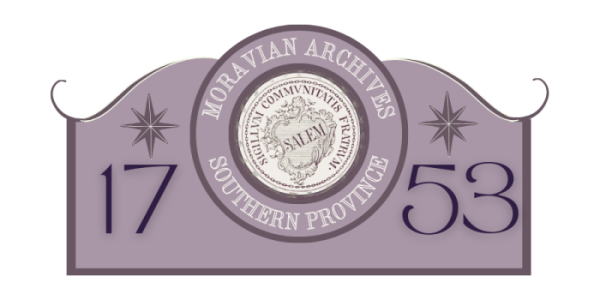Calvary Moravian Church
“West” Winston was mostly wooded but growing fast in the 1880’s, and a number of Moravians were settling there. But they soon found that Salem’s Home Church was too far away to attend services regularly. The need for a new church was there, and Calvary was begun to fill that need, thus becoming the first Moravian church in Winston.
A handsome brick chapel was constructed, and dedicated on December 10, 1889. Less than four years later, on April 20, 1893, Calvary was formally organized as a branch of Salem Congregation in the Southern Province. A parsonage was constructed the next year.
Calvary’s chapel was quite large, comparable in size to some of the churches of other denominations in Winston and able to seat 350. But soon it wasn’t large enough for fast growing Calvary.
Construction began in 1923 on a magnificent structure with a distinctly Moravian design, crowned with a tower to house Winston’s former town clock. On January 25, 1931, the last Sunday of his life, Bishop Edward Rondthaler presided at the dedication of Calvary’s fine new church building. It still serves today as Calvary’s place of worship.
Construction of the church came early in the pastorate of Edmund Schwarze, who served Calvary for 34 years, from 1916 to 1950. Shortly after Schwarze’s arrival, Calvary members helped him purchase a “machine,” a new Dodge automobile, to help his visitations to the large
and scattered membership. Mission work was supported with the adoption in 1919 of Kenneth G. Hamilton as Calvary’s “missionary pastor” to Nicaragua. In the early 1920’s Calvary assisted in the beginning of another suburban Moravian church — Ardmore.
After Bishop Schwarze’s retirement, Calvary continued its progress. A new parsonage was acquired in 1958, and in 1962 a large addition was built to the Christian education building. In 1977 Calvary made history when Carol Foltz was installed as associate pastor, becoming the first woman ordained into the ministry in the Southern Province.
Calvary’s 100th anniversary was celebrated with a year of services, culminating in November 1993 with the burial of a time capsule to be opened in another century.
Moravian Archives, 2002
